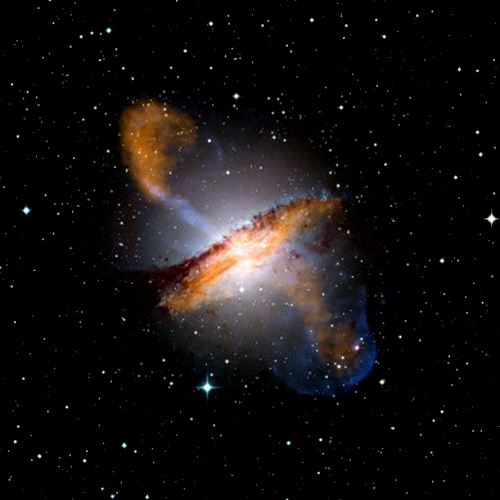News
The talks can be followed in real time here (Start session as guest/invitado)
Note that the meeting will be held in the Salon de Actos at the Guajara campus of La Laguna University. The place can be easily reached with the tram (MetroTenerife), line 1, at the stop Campus Guajara. Tickets can be adquired at tram stops or using the mobile app "Via Móvil" ( http://www.via-movil.es).
Scientific Program available ( PDF).
Abstract Booklet available (PDF).
Special rate (65€/night) for room reservation at Hotel Nivaria available until September 26th.
Rationale
Since the discovery of Seyfert galaxies in the early 1940's, active galaxies
have been known for more than 70 years. Although intensely studied during decades by a reduced,
devoted scientific community, they were often considered exotic objects, sites of some of the most violent
phenomena in the Universe.
Things have changed radically in the last 20 years, because different major scientific results suggest that
nuclear activity may represent an essential phase in galaxy formation and evolution. Most, if not all,
massive galaxies harbour a supermassive black hole in their centers, whose mass is tightly
correlated with certain galaxy properties, including the bulge mass. The cosmic evolution of star formation
in galaxies and AGN appear to follow similar trends back to z~3-4. The idea that nuclear activity is at the
basis of this relationship has gained strength in the last decade, being supported by theory and
observations.
We have advanced significantly in our understanding of active galaxies, although numerous major
questions remain open, regarding their intrinsic nature and their role on galaxy evolution, for instance:
- What triggers nuclear activity in galaxies?
- AGN accretion modes and Black-Hole physics
- The physics of jets and their impact in galaxies feedback
- How important are AGN feeding and feedback processes to regulate the formation and evolution of galaxies?
- What is the role of obscuration in our ability to identify AGN at different redshifts and wavelengths?
- What are the properties of the obscuring torus and how do they depend on AGN luminosity and class?
Following the success of the prior Spanish AGN meetings, the aim of this IV Spanish Meeting of AGN Research is to bring together researchers on the area to present the most up to date related scientific results, debate about the major open questions and new paths to address them, discuss the limitiations of current technological facilitities and the potential of upcoming instrumentation, that will be available in the near future, in particular the foreseen instrumentation on GTC ( EMIR, FRIDA, MEGARA & MIRADAS) as well as on the JWST and ATHENA.
The IV Meeting will consist of short contributed talks (15-20 min) distributed over 5-6 sessions plus an special session with invited talks devoted to review upcoming instrumentation of relevant interest for AGN studies.
This meeting is sponsored by the Astronomy Infrastructures Network (RIA) as part of its workshop activities under grant AYA2015-71939-REDI.
The Meeting will take at La Laguna (Tenerife) from October 27 to 28, 2016. Please check here for important dates (Registration & Abstract Submission).
